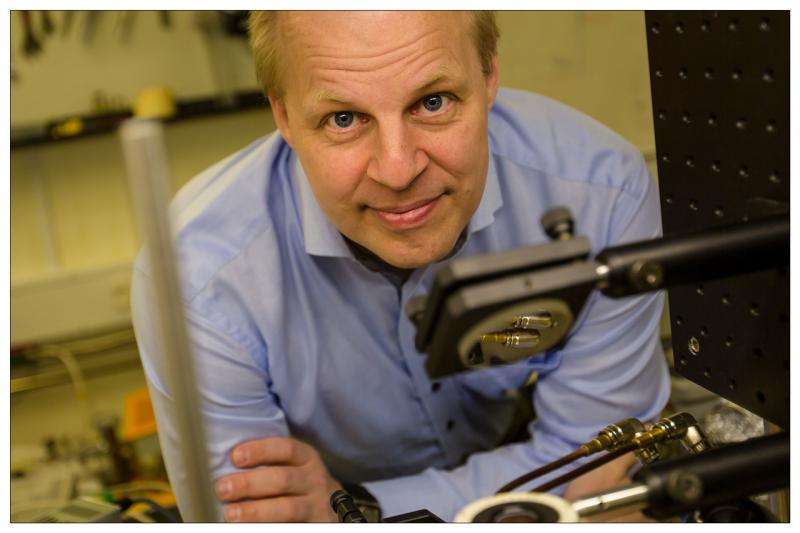A new EU project on ultra-precise atomic clocks

Jan Thomsen, Associate Professor and head of the Ultracold Atoms research group at the Niels Bohr Institute is part of a grant of 14 million kroner to participate in an EU project to develop ultra-precise atomic clocks that will define international timescales.
An atomic clock can be compared to an old-fashioned pendulum clock, which is a mechanical clock with a swinging weight that swings regularly back and forth while it causes a gear to turn one tooth for each swing of the pendulum. This is the clocks counter. A good pendulum clock will have an inaccuracy of a few minutes per year. In an atomic clock, the swinging is comprised of an electron that is excited by laser light so that it jumps between two electron orbits and it is this oscillation between the two states that makes up the pendulum in the atomic clock. This is the clocks counter. An atomic clock can be so ultra precise that it will only lose less than half a second during the entire 13.7 billion year lifetime of the universe. Such precise atomic clocks have already been developed, but now they must be developed further.
"The project aims to refine some of the quantum mechanical techniques used – make them even more robust and quieter. Atomic clocks with the existing precision and accuracy are very sensitive to external influences. Just placing the clock in a room with a temperature of about 20 degrees and not absolute zero is a big challenge. In addition, we have an ambitious goal to use new quantum methods, where a large group of atoms (pendulums) are forced to swing synchronously and emit light with very uniform colour and frequency. Theoretically, this method should make it possible to develop a clock that is better than the best existing atomic clock by a factor of 10," explains Jan Thomsen.
New definition of a second
Atomic clocks with an uncertainty of just a second over 13.7 billion years could be used for basic research, satellite navigation, environmental monitoring and metrology (methods for determining measurement units). Atomic clocks of this type have already been clearly proven to be better than the atomic clocks based on caesium atoms that are currently being used to define how long a second is and it is expected that this research project will form the basis for a new, future definition of the SI second, the international timescale for one second. But before you redefine the international timescales with new types of atomic clocks, you need to have confidence that the atomic clocks can perform the measurements on the level that they estimated to be able to achieve.
The project, which should lift atomic clock technology, consists of a collaboration network of researchers in nine different European countries, including England, Germany, France and Denmark.
"We are in very fine company," says Jan Thomsen. Jan Thomsen works with strontium atoms with which he has achieved very promising results and he adds, with some satisfaction, that very prestigious research groups have now embraced the technique that was developed in the Ultracold Atoms research group's quantum metrology laboratory.
The project will start 1 May and will run over two and a half years. For Jan Thomsen, this grant means that he can continue to develop the ideas that the research group is working on.
Provided by University of Copenhagen




















